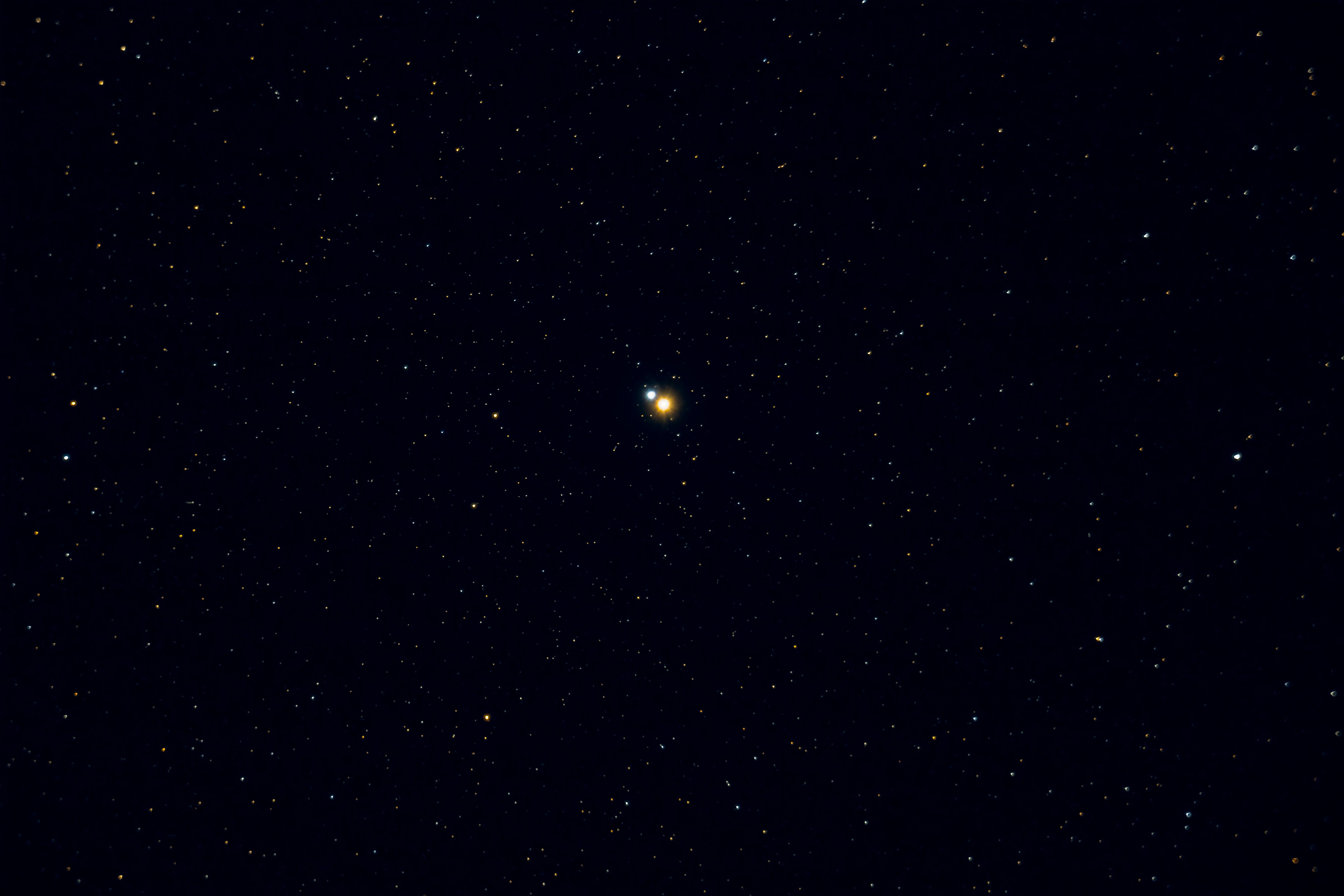
Our universe is a secretive empire that burdens many astronomers with misconceptions. And nothing is as amazing, confusing, and elusive as the colors of the cosmos.
Take everyone’s favorite binary star, Albireo, whose components shine in a gorgeous contrasting yellow and blue. Science explains that compared with its golden counterpart, the blue star is hotter because its greater mass creates awesome gravitational pressure and a boosted burn rate in its core.
But few astronomers know that those colors don’t exist when no one’s looking. That’s because light is really just an energy morsel composed of alternating magnetic and electric fields. Neither field has brightness nor color. Instead, when that invisible electromagnetic energy strikes an animal’s cone-shaped retina cell, it inaugurates a biological process where millions of neurons cooperatively fashion the sensation of “blue.” Creating visual experiences consumes half the brain’s capacity. So, while Albireo is some 400 light-years away, its colorful image occurs solely within the skull.
What’s more, usually-gorgeous Albireo is colorless if it’s not optically intensified by a lens or mirror. Our retina has about 100 million specialized rod-shaped cells that solely function in low-energy situations and deliver their sensations in grayscale alone. It’s the less-sensitive cones, numbering only 6 million, that register color. That’s why the Pleiades look gray or white to the naked eye but pastel blue through binoculars.
When light is faint, the human mind won’t create any sort of color, which is why galaxies are always visually gray no matter the telescope size. And even the gray is sometimes jeopardized: At bright levels, the left eye’s blind spot — where the optic nerve sits — never coincides with the right eye’s, so the image remains intact. But at low light levels, a different situation occurs. Our rod-cell-based scotopic vision suffers a huge blind spot twice the Full Moon’s width lying straight ahead, with the areas of both eyes where no rods are present matching up. It’s an important reason to observe faint celestial objects by looking slightly to the side. A 15° offset is ideal.
And even that retinal rod-versus-cone business is a simplification. There are three different cone types — named L, M, and S — and only the S variety can show objects as blue. That’s why 8 percent of all males, missing one of the three types of cones since birth, perceive the cosmos differently from the rest of us. They see rainbows as simplified bands of blue and yellow. These people with deuteranopia (aka colorblindness), happily see Albireo as we do, though the contrasting hues of other binaries like Antares elude them.
If you chose a single intriguing cosmic color, it would be hard to beat green. It’s the wavelength of peak energy emission of the Sun. The topmost sensitivity of the human eye. The chief and often only visual color of most aurorae, thanks to oxygen’s emission at 557.7 nanometers. The main color of planetary nebulae. Yet amazingly, while you’ll find stars that are red, orange, yellow, blue, brown, black, or even purply, there are no green ones.
Why? Our Sun emits electromagnetic energy that creates in our minds the sensation of every spectral color, as rainbows vividly demonstrate. All the universe’s “living” stars with active fusion cores emit those same colors and no others. None fail to provoke human visual systems into perceiving red, green, and blue — light’s primary colors, which appear white when combined. That’s why the universe’s overall color is white or beige.
If a star is unusually hot, it emits energy we perceive as a blue excess. Cool stars like Betelgeuse create a red surplus. But stars never emit solely green. And since nearly all stars still emit a lot of green, red, and blue, white remains the main takeaway, with any extra blue or red constituting a pallid embellishment. This white flood explains why stars rarely appear richly hued but are only pastels.
The toughest celestial color is red, which can’t be seen at all when faint, not even as gray. That’s why the reds in the Orion Nebula (M42), so stunning in astroimages, are rarely visible to the eye, even with backyard equipment. Considering M42’s ruddy source — excited hydrogen, the most abundant element — it’s ironic and unfair that this hue is withheld from our eager eyes.
It’s yet another quirk in a cosmos crowded with them.









